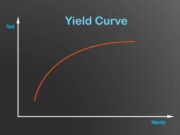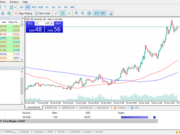What is ‘Ultra ETF’
A class of exchange-traded funds (ETF) that employs leverage in an effort to achieve double the return of a set benchmark. The first ultra ETFs were launched in 2006 and the class has grown to include different ETFs with underlying benchmarks ranging from broad market indexes, such as the S&P 500 and Russell 2000, to specific sectors, such as technology, healthcare and basic materials.
Explaining ‘Ultra ETF’
According to the prospectuses for these funds, they may not achieve double the return of the benchmark during flat markets. Long-run returns may also diverge from the desired return; the ultra ETFs’ only aim is to achieve twice the daily return, which they have done fairly accurately in the short time they can be analyzed.
Ultra ETFs can be beneficial to investors who are short on capital or allocation space within a diversified portfolio. For example, they can invest 5% of their portfolios into an ultra ETF and gain closer to 10% exposure due to the leveraged returns.
Increased daily volatility is both the biggest benefit and greatest danger of ultra ETFs. They are best suited to short-term investing strategies or quick trading to maximize a given bet in the market. The expense ratios also run much higher than for standard ETFs, as most charge 0.95% of the total assets.
Further Reading
- Long term performance of leveraged ETFs – papers.ssrn.com [PDF]
- Have leveraged and traditional ETFs impacted the volatility of real estate stock prices? – www.tandfonline.com [PDF]
- Leveraged ETFs: A risky double that doesn't multiply by two – search.proquest.com [PDF]
- Ultra-high-frequency lead–lag relationship and information arrival – www.tandfonline.com [PDF]
- Duration, Ultra-High-Frequency Volatility and Value-at-Risk: Forecasting Financial Market Risk Using Intraday Information – en.cnki.com.cn [PDF]
- Portfolio performance with inverse and leveraged ETFs. – search.ebscohost.com [PDF]
- Shorting Leveraged ETF Pairs – jot.pm-research.com [PDF]
- Impact of leveraged ETF trading on the market quality of component stocks – www.sciencedirect.com [PDF]
- Ultra-High-Frequency Pairs Trading in Gold ETFs – papers.ssrn.com [PDF]
- Stock Price Volatility of Banks and Other FinancialsEmanating from the Inception ofLeveraged, Inverse, and Traditional ETFs – jii.pm-research.com [PDF]


































